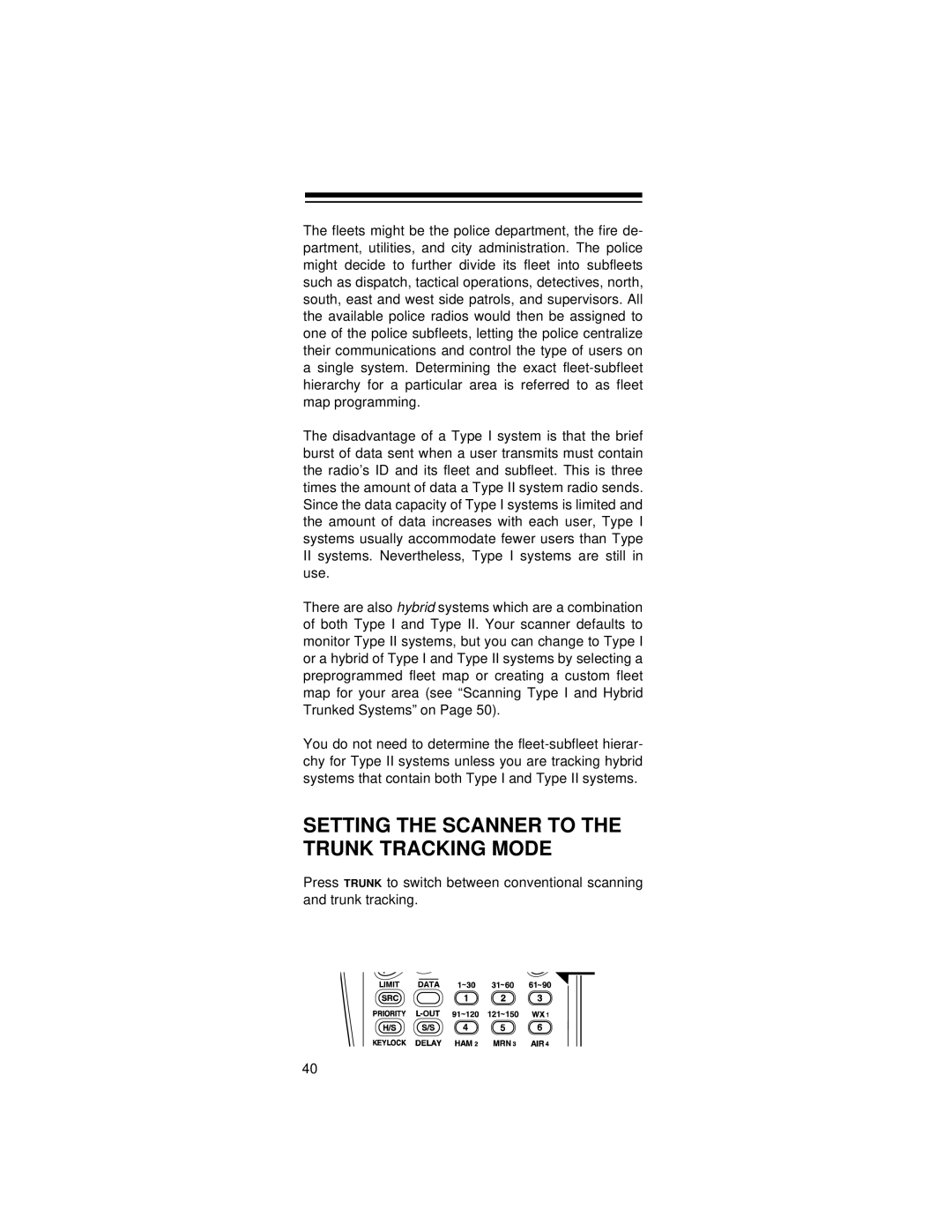
The fleets might be the police department, the fire de- partment, utilities, and city administration. The police might decide to further divide its fleet into subfleets such as dispatch, tactical operations, detectives, north, south, east and west side patrols, and supervisors. All the available police radios would then be assigned to one of the police subfleets, letting the police centralize their communications and control the type of users on a single system. Determining the exact
The disadvantage of a Type I system is that the brief burst of data sent when a user transmits must contain the radio’s ID and its fleet and subfleet. This is three times the amount of data a Type II system radio sends. Since the data capacity of Type I systems is limited and the amount of data increases with each user, Type I systems usually accommodate fewer users than Type
IIsystems. Nevertheless, Type I systems are still in use.
There are also hybrid systems which are a combination of both Type I and Type II. Your scanner defaults to monitor Type II systems, but you can change to Type I or a hybrid of Type I and Type II systems by selecting a preprogrammed fleet map or creating a custom fleet map for your area (see “Scanning Type I and Hybrid Trunked Systems” on Page 50).
You do not need to determine the
SETTING THE SCANNER TO THE TRUNK TRACKING MODE
Press TRUNK to switch between conventional scanning and trunk tracking.
40
